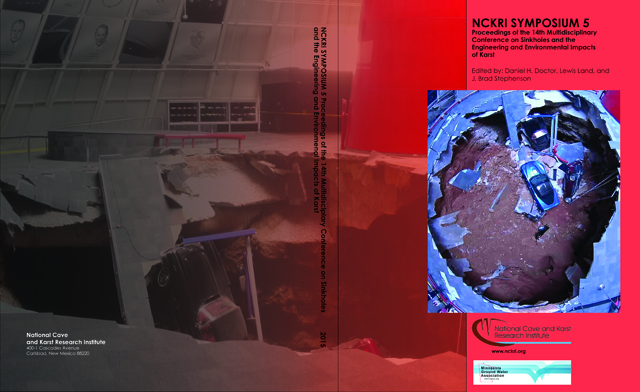Abstract
The karst lands of southeast Minnesota contain more than one hundred trout streams that receive perennial discharge from Paleozoic bedrock springs. Several of the Paleozoic bedrock units that provide discharge are karst aquifers. Field investigations into the flow characteristics of these formations have been conducted using fluorescent dyes to map groundwater springsheds and characterize groundwater flow velocities for use in water resource protection. Recent field work has focused on the Cambrian Lone Rock Formation, a siliciclastic unit consisting of very fine-grained sandstone and siltstone with minor beds of shale and dolostone. The formation is mapped within tributary valleys of the Mississippi River throughout southeastern Minnesota and southwestern Wisconsin. Overlying the Lone Rock is the Cambrian St. Lawrence Formation. Over a dozen streams have been observed to disappear into stream sinks where the upper St. Lawrence is the bedrock unit closest to the land surface. At three of these sinking stream locations, dye was recovered emanating from springs located in the basal St. Lawrence or from springs located in two distinct zones in the Lone Rock. Dye-breakthrough velocities calculated using passive charcoal detectors ranged between 21-214 meters/day at one location and 88-153 meters/day at another. At a third site, automatic water samplers were placed at a spring that had been previously demonstrated to be connected to a St. Lawrence stream sink through dye tracing. In that trace, an eight-hour sampling frequency determined the dye-breakthrough velocity was 314 meters/day. Based on outcrop and borehole observations in Minnesota, secondary pore networks in siliciclastic-dominated units generally have bedding-parallel and vertically oriented apertures less than a few centimeters. The process by which the bedding-parallel secondary pore networks form remains obscure; some appear to be mechanically developed. However, interstitial carbonate cement within these units leads to the possibility of dissolution being a minor factor in the formation’s groundwater flow characteristics. These dye traces were conducted at three different sites across a twenty-three kilometer distance and are evidence that the siliciclastic Lone Rock Formation has a conduit-flow component similar to that found in carbonate karst aquifers.
Rights Information

This work is licensed under a Creative Commons Attribution-No Derivative Works 3.0 License.
DOI
http://dx.doi.org/10.5038/9780991000951.1026
Included in
Environmental Monitoring Commons, Geology Commons, Hydrology Commons, Water Resource Management Commons
Conduit Flow in the Cambrian Lone Rock Formation, Southeast Minnesota, U.S.A.
The karst lands of southeast Minnesota contain more than one hundred trout streams that receive perennial discharge from Paleozoic bedrock springs. Several of the Paleozoic bedrock units that provide discharge are karst aquifers. Field investigations into the flow characteristics of these formations have been conducted using fluorescent dyes to map groundwater springsheds and characterize groundwater flow velocities for use in water resource protection. Recent field work has focused on the Cambrian Lone Rock Formation, a siliciclastic unit consisting of very fine-grained sandstone and siltstone with minor beds of shale and dolostone. The formation is mapped within tributary valleys of the Mississippi River throughout southeastern Minnesota and southwestern Wisconsin. Overlying the Lone Rock is the Cambrian St. Lawrence Formation. Over a dozen streams have been observed to disappear into stream sinks where the upper St. Lawrence is the bedrock unit closest to the land surface. At three of these sinking stream locations, dye was recovered emanating from springs located in the basal St. Lawrence or from springs located in two distinct zones in the Lone Rock. Dye-breakthrough velocities calculated using passive charcoal detectors ranged between 21-214 meters/day at one location and 88-153 meters/day at another. At a third site, automatic water samplers were placed at a spring that had been previously demonstrated to be connected to a St. Lawrence stream sink through dye tracing. In that trace, an eight-hour sampling frequency determined the dye-breakthrough velocity was 314 meters/day. Based on outcrop and borehole observations in Minnesota, secondary pore networks in siliciclastic-dominated units generally have bedding-parallel and vertically oriented apertures less than a few centimeters. The process by which the bedding-parallel secondary pore networks form remains obscure; some appear to be mechanically developed. However, interstitial carbonate cement within these units leads to the possibility of dissolution being a minor factor in the formation’s groundwater flow characteristics. These dye traces were conducted at three different sites across a twenty-three kilometer distance and are evidence that the siliciclastic Lone Rock Formation has a conduit-flow component similar to that found in carbonate karst aquifers.

